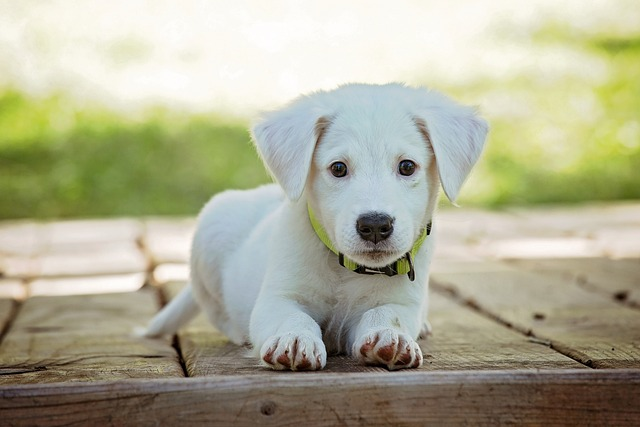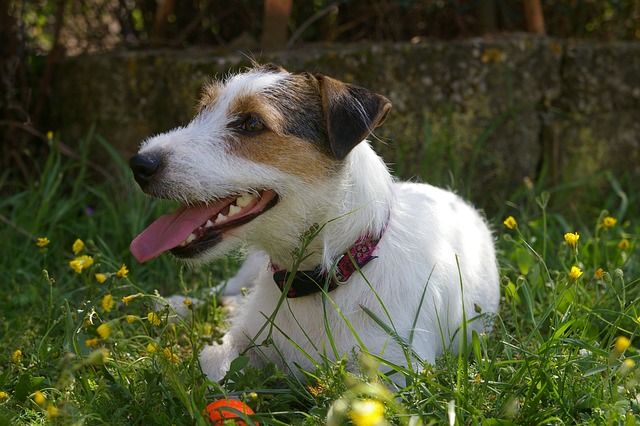How to Get Rid of Dog Lice – Unlocking the Secrets for a Happier, Healthier Pet!

Having a furry friend is genuinely enjoyable, but sometimes our beloved dogs can struggle with irritating problems like lice.
If you’ve noticed your pup scratching more than usual or have spotted tiny critters in their fur, it might be time to tackle the issue head-on. Don’t worry – you’re not alone in this!
In this simple and user-friendly guide, we’ll walk you through the steps to effectively get rid of dog lice and bring back the wagging tails and happy barks in no time.
Let’s find the solution to dog lice and discover how to get rid of dog lice for good.

7 Symptoms of Lice in Dogs
Lice infestations in dogs can be uncomfortable and irritating for your furry friend. Recognizing the symptoms of lice is the first step towards addressing the issue promptly.
Keep an eye out for the following signs to determine if your dog might be dealing with lice:
1. Excessive Scratching and Itching
One of the most common signs of lice infestation is when your dog starts scratching or itching more than usual.
If you notice your pup constantly nibbling at their skin or fur, it could be a sign that lice are causing discomfort.
2. Hair Loss
Lice can cause hair loss in localized areas due to constant scratching and biting.
If you see patches of thinning or bald spots on your dog’s skin, lice might be the culprit.
3. Irritated Skin
Lice bites can lead to skin irritation, redness, and inflammation. If your dog’s skin looks redder than usual, or you notice small bumps and sores, it’s a sign that lice might be present.
4. Restlessness and Agitation
Dogs with lice might exhibit signs of restlessness, discomfort, or agitation.
If your usually calm and relaxed dog becomes unusually fidgety, it could be reacting to the irritation caused by lice.
5. Visible Lice or Eggs
In some cases, you might be able to spot lice or their eggs (nits) on your dog’s fur.
Adult lice are small, flat, and pale-colored insects that move quickly, while nits are tiny oval-shaped eggs attached to the hair shafts.
6. Dull Coat
Lice infestations can take a toll on your dog’s overall appearance.
A once-glossy coat might appear dull and lackluster due to the irritation caused by constant scratching.
7. Behavioral Changes
Dogs suffering from lice infestations might exhibit changes in their behavior.
They could become more irritable, lethargic, or show a decrease in appetite.
2 Types of Lice That Infest Dogs
Lice might be tiny, but they come in different varieties when it comes to infesting our canine companions.
Understanding the different types of lice that can affect dogs is essential for effective treatment and prevention.
Here are the two main types of lice that you might encounter on your furry friend:
1. Chewing Lice (Trichodectidae)
Chewing lice are the most common type of lice found on dogs. These lice feed on skin debris, dander, and sometimes blood by biting and chewing on the skin and hair of their host.
They are small, wingless insects with strong jaws adapted for grasping onto hair shafts.
Chewing lice infestations can lead to itching, scratching, and skin irritation in dogs.
2. Sucking Lice (Anoplura)
Sucking lice, as the name suggests, feed on their host’s blood by piercing the skin and sucking blood through specialized mouthparts.
Fortunately, sucking lice are relatively rare in dogs compared to chewing lice.
These lice are slightly larger than chewing lice and have a more elongated body shape. They can cause anemia, skin irritation, and other health issues in severe infestations.
Both types of lice can cause discomfort and skin problems for your furry friend. While the signs of infestation might overlap, it’s essential to correctly identify the type of lice your dog has to determine the most appropriate treatment.
Consulting your veterinarian is crucial for accurate diagnosis and guidance on how to proceed.

8 Treatment for Lice in Dogs – How to Get Rid of Dog Lice
Discovering lice on your beloved pup can be concerning, but the good news is that lice infestations in dogs can be effectively treated with the right approach.
Here’s a step-by-step guide to help you eliminate those pesky parasites and restore your dog’s comfort:
1. Consult Your Veterinarian
Before starting any treatment, consult your veterinarian to confirm the diagnosis and get tailored advice.
Your vet can help determine the severity of the infestation and recommend the most suitable treatment options.
2. Isolate and Clean
Isolate your infested dog from other pets to prevent the lice from spreading.
Wash your dog’s bedding, toys, and grooming tools in hot water and detergent to get rid of any lice or eggs that might be hiding.
3. Topical Treatments
Your vet might recommend using topical treatments such as medicated shampoos, powders, or spot-on treatments specifically designed to finish off lice.
Follow the instructions carefully and ensure that the product is safe for your dog’s size and age.
4. Manual Removal
Gently comb through your dog’s fur with a fine-toothed lice comb.
This can help remove adult lice and nits. Dip the comb in warm, soapy water after each pass to drown the lice.
5. Prescribed Medications
In severe cases, your vet might prescribe oral medications to help eliminate lice.
These medications typically target the nervous system of lice, causing paralysis or death.
6. Follow-Up Treatments:
Lice have a life cycle, so it’s crucial to continue treatments as recommended by your vet.
Follow-up treatments help eliminate newly hatched lice that might not have been affected by the initial treatment.
7. Maintain Hygiene
Regular grooming and hygiene practices can help prevent future infestations.
Keep your dog’s living area clean, and regularly inspect their fur for any signs of lice.
8. Preventive Measures
If your dog spends time in areas frequented by other dogs, consider using preventive products recommended by your vet.
These products can help reduce the risk of lice infestation.
Dog Lice Treatment Home Remedies
If you’re looking for natural and home-based solutions to tackle lice infestation in your dog, there are a few remedies you can try.
Keep in mind that while these remedies can help alleviate the problem, consulting your veterinarian for guidance is always recommended.
Here are some home remedies to consider:
1. Apple Cider Vinegar Solution:
Mix equal parts of water and apple cider vinegar in a spray bottle. Spray the solution onto your dog’s coat, focusing on the areas where lice are most visible.
Let it sit for a few minutes before gently combing through your dog’s fur with a fine-toothed comb.
Apple cider vinegar’s acidity can help loosen nits and adult lice.
2. Neem Oil:
Neem oil is known for its natural insect-repelling properties. Dilute neem oil with carrier oil (like coconut oil) and apply it to your dog’s skin and coat.
Neem oil can help repel lice and soothe irritated skin.
3. Diatomaceous Earth:
Food-grade diatomaceous earth is a natural powder that can help dehydrate and finish off lice.
Lightly dust your dog’s coat with diatomaceous earth, paying extra attention to areas where lice are most concentrated.
Leave it on for a short period before brushing it out.
4. Olive Oil:
Applying olive oil to your dog’s coat can help suffocate lice. Gently massage a small amount of olive oil onto your dog’s skin and fur, focusing on the affected areas.
Let it sit for a few hours, then comb out the lice and nits.
5. Lemon Spray:
Create a lemon-infused spray by boiling sliced lemons in water and letting the mixture cool. Strain the liquid and pour it into a spray bottle.
Spray your dog’s coat with the lemon solution, as it may have some natural insect-repelling qualities.
6. Regular Grooming:
Frequent grooming with a fine-toothed comb can help physically remove lice and nits from your dog’s fur.
Comb through the coat section by section, and dip the comb in soapy water after each pass to drown any lice that are removed.
7. Wash Bedding and Toys:
Wash your dog’s bedding, toys, and other items they frequently come into contact with in hot water.
This helps eliminate any lice or eggs that might be hiding in their environment.

FAQs on How to Get Rid of Dog Lice
1. Can I use human lice treatment products on my dog?
It’s not recommended to use human lice treatment products on dogs. These products might contain ingredients that can be harmful to pets.
Always consult your veterinarian for safe and effective treatments designed specifically for dogs.
2. How do I prevent my dog from getting lice in the first place?
To prevent lice infestations, practice good hygiene by regularly grooming your dog, cleaning their living area, and avoiding contact with dogs that might have lice.
Consider using preventive products recommended by your vet if your dog is at risk of exposure.
3. Can lice infestations spread to humans from dogs?
While it’s rare, some species of lice that infest dogs can potentially affect humans. However, dog lice typically prefer their canine hosts.
Human lice and dog lice are different species, so the risk of transmission is low.
Still, it’s important to address your dog’s lice infestation promptly to prevent any potential discomfort for both your dog and your family.
Conclusion
Dealing with a lice infestation in your dog can be worrisome, but armed with knowledge and the right approach, you can successfully eliminate these pesky parasites.
Remember that early detection, consultation with your veterinarian, and a combination of proper treatments are key to ensuring your furry friend’s comfort and well-being.
By following the steps outlined in this guide, you can not only bid farewell to dog lice but also foster a healthier bond with your four-legged companion.
Keeping your dog’s coat clean, practicing regular grooming, and maintaining a hygienic living environment will go a long way in preventing future infestations.
